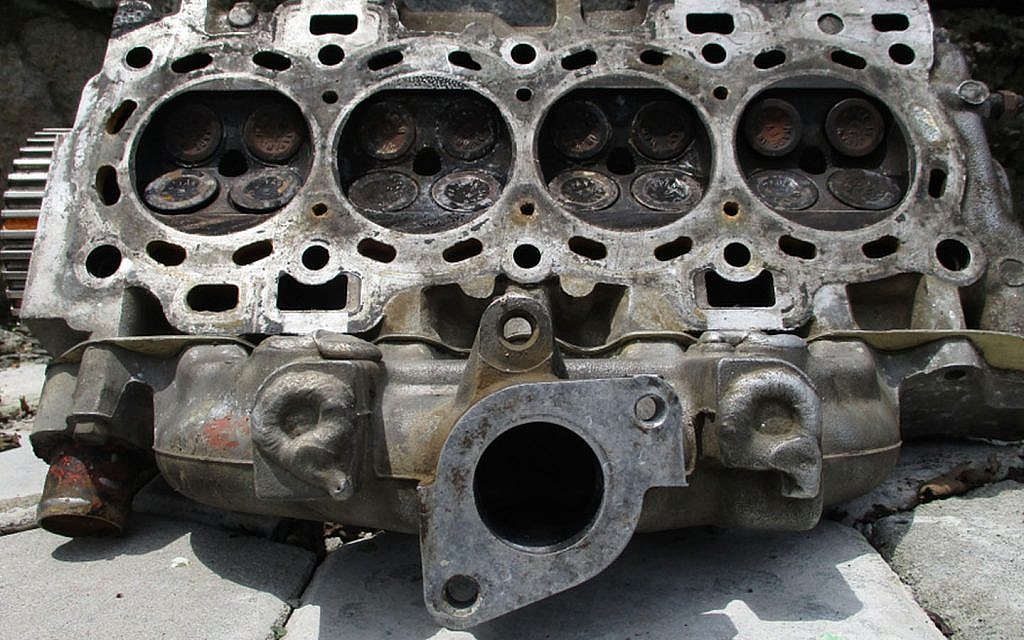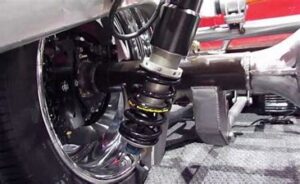Vehicles may give us cues when they’re not feeling well, much like our reliable roadside buddies. For example, a blown head gasket is an indication that even experienced drivers frequently miss. At this point, you may be asking yourself, “What’s a head gasket, and why should I care?” Alright, enough technical jargon, let’s try to explain. Envision the engine of your car as its lifeblood, bringing vitality to each drive. By acting as a barrier of defence between the cylinder head and the engine block, the head gasket is crucial in this comparison. It makes sure that coolant and oil, among other vital fluids, stay in their proper lanes and don’t mix in inappropriate places.
Why then is this significant? Because a head gasket’s decision to give up might result in several issues. Overheating, odd odours, and subpar engine performance can appear. But do not worry! This handbook is your ticket to deciphering the clues, solving the puzzle, and arming yourself with the know-how to check for a blown head gasket. It’s time to start your journey towards automobile care so that your four-wheeled companion can continue to be happy and healthy while travelling.
Table of Contents
Understanding The Meaning Of A Blown Head Gasket In A Car
Though it may seem like a complex car problem, let’s simplify the explanation of a blown head gasket. The head gasket, which is a portion of the engine of your car, acts as a buffer between the cylinder head and the engine block, two vital engine parts. See it as an essential seal that keeps vital fluids like coolant and oil where they belong and performing their respective functions. A “blown” head gasket is what happens when the gasket decides to give up or becomes damaged. This is problematic because these fluids can now mix or leak out of places where the once-reliable seal is no longer there.

However, things start to get nasty, just like when a water balloon leaks. The repercussions may be a little problematic. Your car’s performance could suffer, your engine could overheat, or you might detect strange odours. It’s similar to knowing when your car isn’t feeling well to understand a blown head gasket. It’s an indication that there’s a problem behind the hood that needs to be fixed, and taking care of it now will prevent more serious issues later. In summary, a burst head gasket indicates that your engine’s shielding system needs maintenance to keep everything functioning properly.
How To Check For A Blown Head Gasket: A Simple Guide!
When it comes to auto maintenance, being proactive means keeping an eye out for any indications of a burst head gasket. This important part is essential to the health of your engine, and if you discover problems early, you can avoid a lot of difficulties in the future. Here is a quick method to assist you in checking your vehicle for a burst head gasket:

1. Look Out For Warning Indices:
Initially, take note of any odd indications. If you observe white smoke coming from the exhaust, a sweet fragrance, or the engine overheating, these could be symptoms of a blown head gasket. Red flags include unusual variations in the coolant level and the presence of oil in the coolant reservoir.
2. Check For Smoke From The Exhaust:
Look at the exhaust smoke’s hue at a cold start. If it remains white over time, it may indicate coolant seeping into the combustion chamber, which is a common symptom of a burst head gasket. A typical exhaust should not smell nice and be transparent.
3. Verify The Amount Of Coolant:
Pay attention to the coolant level in your car. An abrupt decline in value without any obvious leaks could be a sign of a head gasket issue. Check the coolant for any oil contamination as well, as this can happen if the gasket is damaged and allows the coolant and oil to mix.
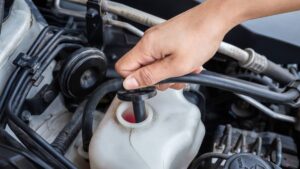
4. Conduct A Pressure Test:
Do a pressure test to determine the cooling system’s integrity. This test, which involves pressurizing the system to find leaks, can be performed by a qualified mechanic. A large reduction in pressure may indicate that the head gasket has burst.
5. Inspect Oil For Contamination:
Look for any indications of pollution in the engine oil. An obvious sign of a head gasket problem is coolant mixing with the oil, as indicated by a milky or foamy appearance on the oil dipstick. A typical oil should be a uniform tint that is clear.
6. Search For Outside Leaks:
Examine the engine’s exterior for any obvious leaks. Leaks in the external coolant or oil can result from a blown head gasket. Drips that are visible or puddles under the automobile could indicate a problem.
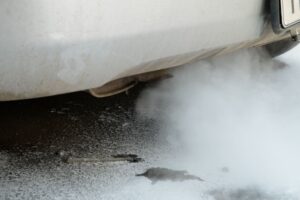
7. Request A Professional Exam:
Seek professional inspection if you’re unsure or if any of the indicators mentioned above exist. Accurate diagnostics and a thorough examination can be carried out by a professional mechanic.
Therefore, by doing these inspections regularly, you can detect a burst head gasket early on, allowing for prompt repairs and halting more engine damage. Remember that the secret to a dependable and trouble-free driving experience is to pay attention to your car’s subtle indications.
Common Causes Of A Blown Head Gasket: Navigating The Road To Engine Health
Additionally, now that we’ve seen how to check for a blown head gasket. However, now we’ll see its common causes in detail. Though it may seem like a complicated car problem, a blown head gasket can often be caused by a few basic factors. Keeping your car’s engine in good shape can be easier if you are aware of these aspects.
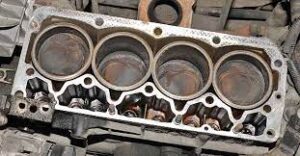
1. Overheating:
Overheating is like leaving a pot on a hot burner alone; your car’s engine is like a busy kitchen. The head gasket may suffer from overheating and become less capable of providing a tight seal. Numerous problems, including low coolant levels, a broken cooling system, and malfunctioning thermostats, might cause this overheating. You can keep your engine from becoming a hot mess by keeping a regular eye on your temperature indicator.
2. Wear On Engines:
Car engines wear and tear with time, just like a beloved pair of sneakers. Prolonged operation without appropriate upkeep may cause the head gasket to gradually deteriorate. You can greatly extend the life of your engine components by changing the oil regularly, doing routine inspections, and taking quick action on minor problems.
3. Bad Upkeep Procedures:
Ignoring the maintenance needs of your car is like avoiding doctor’s appointments; it might work for a while, but it can cause major problems down the road. Neglecting regular maintenance, replacing fluids, and performing other necessary tasks can lead to the head gasket failing. Regular maintenance is the key to a healthy engine.

4. Manufacturing Errors:
Though manufacturing flaws can also cause less frequent, head gasket failures. These imperfections may consist of material or design problems in the gasket. Awareness of any recalls or known problems with your car model might be a proactive step, even though you have no control over the production process.
Therefore, to put it simply, the three major ways to avoid a blown head gasket are to keep your engine cool, do regular maintenance, and be aware of possible manufacturing defects. It only takes a small amount of maintenance to keep your car’s engine strong enough to withstand common enemies that could endanger it.
How To Address The Blown Head Gasket In Your Car?
Although replacing a blown head gasket in an automobile can be a difficult task, it is feasible to resolve the problem and get your car back on the road with the correct procedures and a little perseverance.
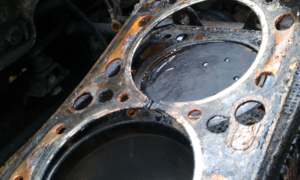
1. Diagnosis:
Verifying that the head gasket is the problem is essential before beginning any repairs. Overheating, coolant leakage, and white smoke from the exhaust are typical symptoms. For an accurate diagnosis, conduct a comprehensive inspection and, if necessary, get advice from a qualified mechanic.
2. Collect The Materials And Tools Needed:
You’ll need a collection of tools, including torque wrenches, socket sets, and wrenches, to fix a blown head gasket. Acquire the necessary supplies as well, such as engine coolant, engine oil, and a fresh head gasket.
3. Get The Car Ready:
To guarantee safety throughout the repair procedure, start by removing the vehicle’s battery. To maintain a clean working environment, drain the engine coolant and oil. Take out any parts that are blocking the cylinder head’s access.
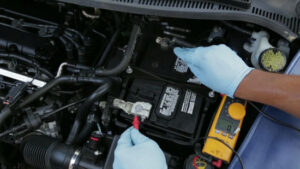
4. Take The Cylinder Head Out:
The bolts holding the cylinder head to the engine block should be loosened and removed. Make sure you adhere to the precise torque sequence that the manufacturer of the vehicle has specified. Carefully remove the cylinder head to reveal the burst head gasket.
5. Clean And Inspect:
To get rid of any remaining material from the old gasket, give the engine block and cylinder head a thorough cleaning. Check for warping or damage on these surfaces, as any anomalies could compromise the operation of the replacement gasket.
6. Fit The Replacement Head Gasket:
After making sure the replacement head gasket fits properly in the cylinder head and engine block openings, install it onto the engine block. Return the cylinder head to its original position with caution, fastening it with the correct bolts using the recommended torque sequence.

7. Put The Parts Back Together:
Any parts you took out to get to the cylinder head should be put back together. Fill the engine back up with new oil and coolant. Verify that all connections are tightened correctly by checking them twice.
8. Evaluate And Track:
Turn on the engine and keep an eye out for any leaks, strange sounds, or overheating. Test drive the vehicle thoroughly to make sure the repair was successful.
9. Continual Upkeep:
Follow a regular maintenance schedule to avoid problems with the head gasket in the future. Check the coolant levels, keep an eye on the engine’s temperature, and take quick action in the event of any warning indications.

Therefore, a methodical approach and close attention to detail are necessary when fixing a blown head gasket. To guarantee a correct and long-lasting repair, it’s always a good idea to seek professional assistance if you’re unsure of the procedure or uncomfortable with it.
Conclusion:
In summary, all vehicle owners must be aware of how to check for a blown head gasket. Early warning signs can be as simple as white smoke, sweet scents, or unexpected temperature changes. To avoid serious engine damage, routine maintenance is essential. This includes checking the coolant and acting quickly when symptoms appear. Take prompt action and get professional advice and inspections if you suspect a blown head gasket. Early intervention can save expensive repairs and maintain the smooth operation of your vehicle. Make sure your car enjoys a long and trouble-free drive on the open road by being proactive, knowledgeable, and attentive.
